Ship Anomalous Behavior Detection Using Clustering and Deep Recurrent Neural Network
Abstract
1. Introduction
1.1. Intelligent Maritime Traffic Supervision
1.2. Abnormal Behavior of Ship
1.3. Ship Anomaly Detection
1.4. The Motivation of the Study
2. Normal Trajectory Modeling Method
2.1. Data Preprocessing
- Insufficient trajectory data integrity;
- Insufficient accuracy of trajectory data;
- Too much meaningless redundant data.
2.2. Trajectory Clustering Method
3. Anomalous Ship Behavior Detection Using Recurrent Neural Network
3.1. Bidirectional Gated Recurrent Unit Model
3.2. Method for Detecting Abnormal Ship Behavior
4. Experiment and Analysis
4.1. Experimental Data and Preprocessing
4.2. Clustering Analysis
4.3. Ship Abnormal Behavior Detection Experiment
4.3.1. Ship Navigation State Prediction
4.3.2. Ship Abnormal Behavior Detection
5. Conclusions
Author Contributions
Funding
Institutional Review Board Statement
Informed Consent Statement
Data Availability Statement
Conflicts of Interest
References
- International Maritime Organization (IMO). Resolution MSC. 74 (69): Adoption of New and Amended Performance Standards; International Maritime Organization (IMO): London: UK, 1998. [Google Scholar]
- Sidibé, A.; Shu, G. Study of automatic anomalous behavior detection techniques for maritime vessels. J. Navig. 2017, 70, 847–858. [Google Scholar] [CrossRef]
- Laxhammar, R. Anomaly detection for sea surveillance. Information Fusion. In Proceedings of the 11th International Conference on Information Fusion, Cologne, Germany, 30 June–3 July 2008; pp. 1–8. [Google Scholar]
- Iphar, C.; Ray, C.; Napoli, A. Data integrity assessment for maritime anomaly detection. Expert Syst. Appl. 2020, 147, 113219. [Google Scholar] [CrossRef]
- Martineau, E.; Roy, J. Maritime Anomaly detection: Domain Introduction and Review of Selected Literature; Technical Report; Defense Research and Development Canada—Valcartier, Technical Memorandum TM2010-460; Defence Research and Development Canada: Ottawa, ON, Canada, 2011. [Google Scholar]
- Riveiro, M.; Pallotta, G.; Vespe, M. Maritime anomaly detection: A review. Data Min. Knowl. Discov. 2018, 8, e1266. [Google Scholar] [CrossRef]
- Wolsing, K.; Roepert, L.; Bauer, J.; Wehrle, K. Anomaly Detection in Maritime AIS Tracks: A Review of Recent Approaches. J. Mar. Sci. Eng. 2022, 10, 112. [Google Scholar] [CrossRef]
- Chandola, V.; Banerjee, A.; Kumar, V. Anomaly detection: A survey. ACM Comput. Surv. 2009, 41, 75–79. [Google Scholar] [CrossRef]
- Wang, Y.; Liu, J.; Liu, R.W.; Liu, Y.; Yuan, Z. Data-driven methods for detection of abnormal ship behavior: Progress and trends. Ocean. Eng. 2023, 271, 113673. [Google Scholar] [CrossRef]
- Holst, A.; Ekman, J. Anomaly Detection in Vessel Motion; International Report Saab Systems: Järfälla, Sweden, 2003. [Google Scholar]
- Ristic, B.; Scala, B. Statistical analysis of motion patterns in AIS data: Anomaly detection and motion prediction. In Proceedings of the 11th International Conference on Information Fusion, Cologne, Germany, 30 June–3 July 2008; pp. 109–122. [Google Scholar]
- Xiao, F.; Ligteringen, H.; Van Gulijk, C.; Ale, B. Comparison study on AIS data of ship traffic behavior. Ocean. Eng. 2015, 95, 84–93. [Google Scholar] [CrossRef]
- Rong, H.; Teixeira, A.P.; Guedes, S. Ship trajectory uncertainty prediction based on a Gaussian Process model. Ocean. Eng. 2019, 182, 499–511. [Google Scholar] [CrossRef]
- Vespe, M.; Visentini, I.; Bryan, K.; Braca, P. Unsupervised learning of maritime traffic patterns for anomaly detection. In Proceedings of the 9th IET Data Fusion & Target Tracking Conference: Algorithms & Applications, London, UK, 16–17 May 2012; pp. 1–5. [Google Scholar]
- Mascaro, S.; Nicholso, A.E.; Korb, K.B. Anomaly detection in vessel tracks using Bayesian networks. Int. J. Approx. Reason. 2014, 55, 84–98. [Google Scholar] [CrossRef]
- Lei, P.R. A framework for anomaly detection in maritime trajectory behavior. Knowl. Inf. Syst. 2016, 47, 189–214. [Google Scholar] [CrossRef]
- de Souza, E.N.; Boerder, K.; Matwin, S.; Worm, B. Improving fishing pattern detection from satellite AIS using data mining and machine learning. PLoS ONE 2016, 11, e0158248. [Google Scholar]
- Toloue, K.F.; Jahan, M.V. Anomalous behavior detection of marine vessels based on Hidden Markov Model. In Proceedings of the 6th Iranian Joint Congress on Fuzzy and Intelligent Systems (CFIS), Kerman, Iran, 28 February–2 March 2018; pp. 10–12. [Google Scholar]
- Laxhammar, R.; Falkman, G. Online learning and sequential anomaly detection in trajectories. Trans. Pattern Anal. Mach. Intell. 2014, 36, 1158–1173. [Google Scholar] [CrossRef] [PubMed]
- Bomberger, N.A.; Rhodes, B.J.; Seibert, M. Associative learning of vessel motion patterns for maritime situation awareness. In Proceedings of the 9th International Conference on Information Fusion, Florence, Italy, 10–13 July 2006; Volume 54, pp. 1–8. [Google Scholar]
- Zhao, L.B.; Shi, G.Y. Maritime anomaly detection using density-based clustering and recurrent neural network. J. Navig. 2019, 72, 894–916. [Google Scholar] [CrossRef]
- Tang, H.; Yin, Y.; Shen, H.L. A model for vessel trajectory prediction based on long short-term memory neural network. J. Mar. Eng. Technol. 2022, 21, 136–145. [Google Scholar] [CrossRef]
- Tang, H.; Wei, L.Q.; Yin, Y.; Shen, H.; Qi, Y. Detection of abnormal vessel behavior sased on probabilistic directed graph model. J. Navig. 2022, 21, 136–145. [Google Scholar]
- Zhen, R.; Jin, Y.; Hu, Q.Y. Vessel behavior prediction based on AIS data and BP neural network. Navig. China 2017, 40, 6–10. [Google Scholar]
- Zhao, L.B.; Shi, G.Y.; Yang, J.X. Ship trajectories pre-processing based on AIS data. J. Navig. 2018, 71, 1210–1230. [Google Scholar] [CrossRef]
- Douglas, D.H.; Peucker, T.K. Algorithms for the reduction of the number of points required to represent a digitized line or its caricature. Int. J. Geogr. Inf. Geovisualization 1973, 10, 112–122. [Google Scholar] [CrossRef]
- Fikioris, G.; Patroumpas, K.; Artikis, A.; Pitsikalis, M.; Paliouras, G. Optimizing vessel trajectory compression for maritime situational awareness. GeoInformatica 2022, 27, 1–27. [Google Scholar] [CrossRef]
- Ester, M.; Kriegel, H.P.; Sander, J.; Xu, X. A density-based algorithm for discovering clusters in large spatial databases with noise. In Proceedings of the KDD-96 Proceedings, Portland, Oregon, 2–4 August 1996; Volume 96, pp. 226–231. [Google Scholar]
- Pallotta, G.; Vespe, M.; Bryan, K. Vessel pattern knowledge discovery from AIS data: A framework for anomaly detection and route prediction. Entropy 2013, 15, 2218–2245. [Google Scholar] [CrossRef]
- Zhao, L.B.; Shi, G.Y. A trajectory clustering method based on douglas- peucker compression and density for marine traffic pattern recognition. Ocean. Eng. 2019, 172, 456–467. [Google Scholar] [CrossRef]
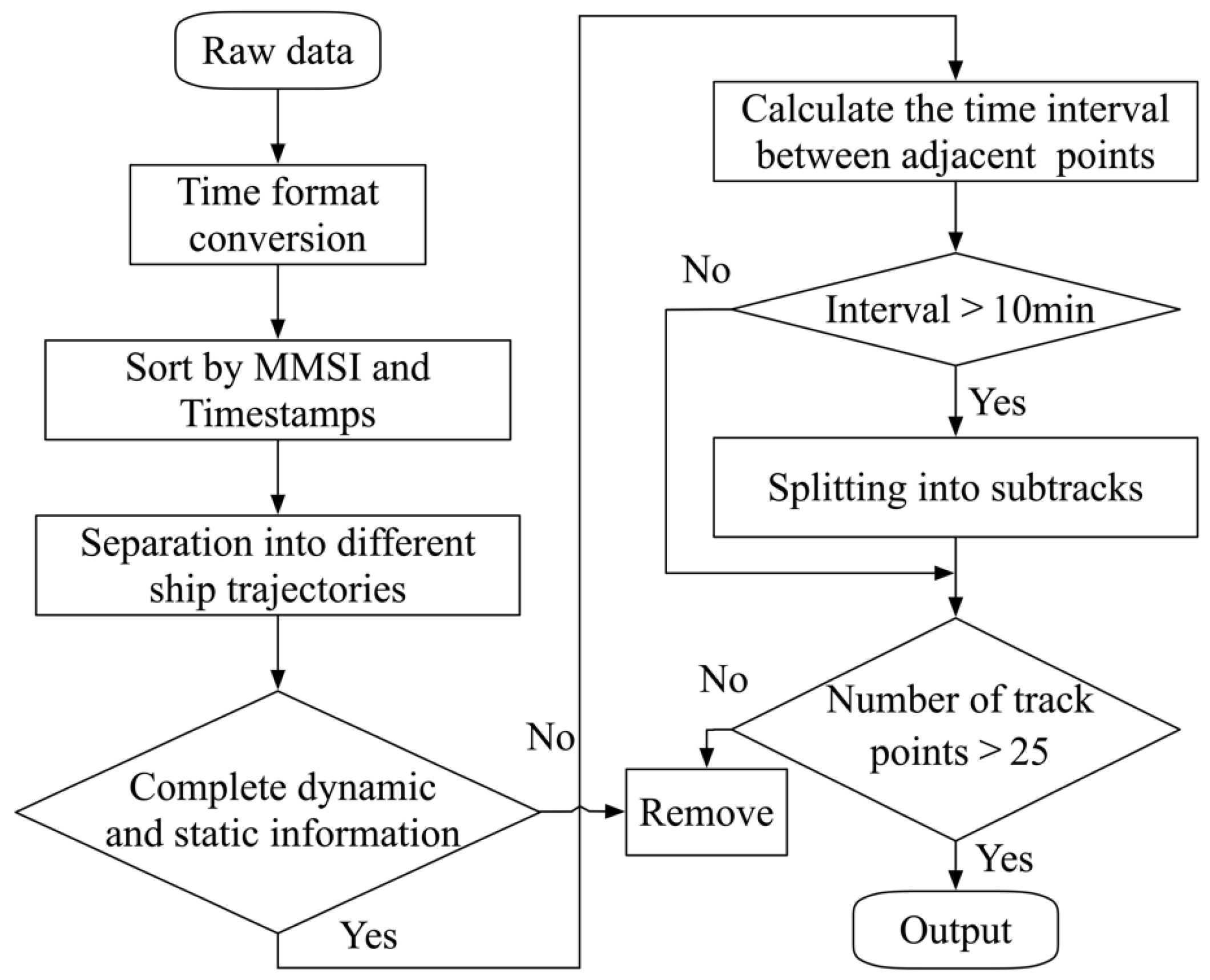
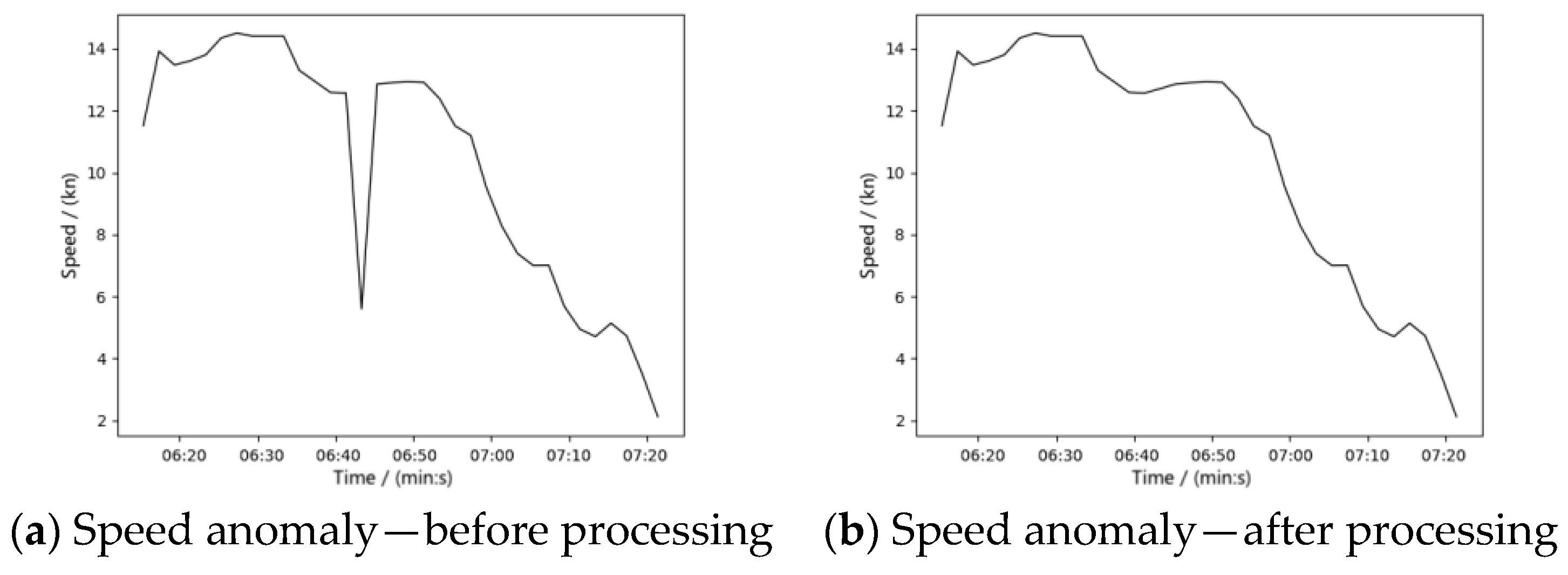

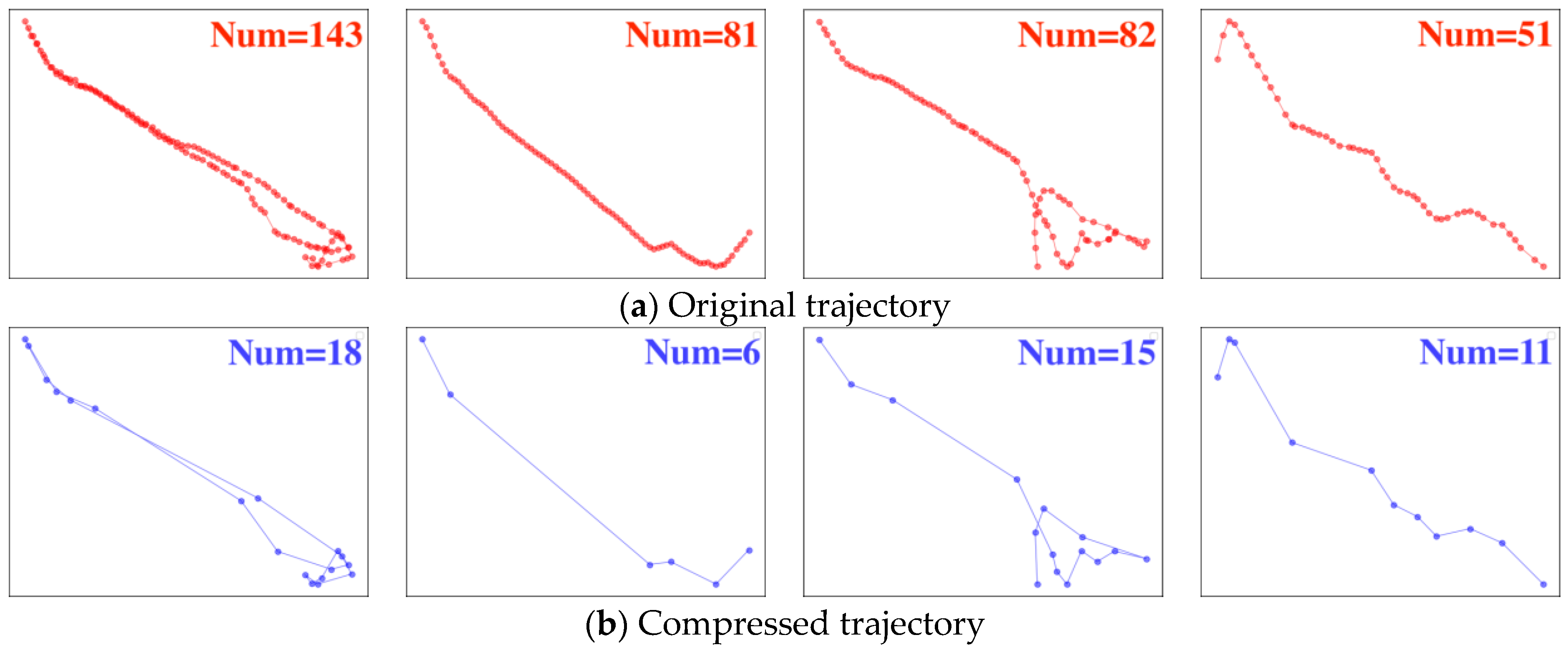
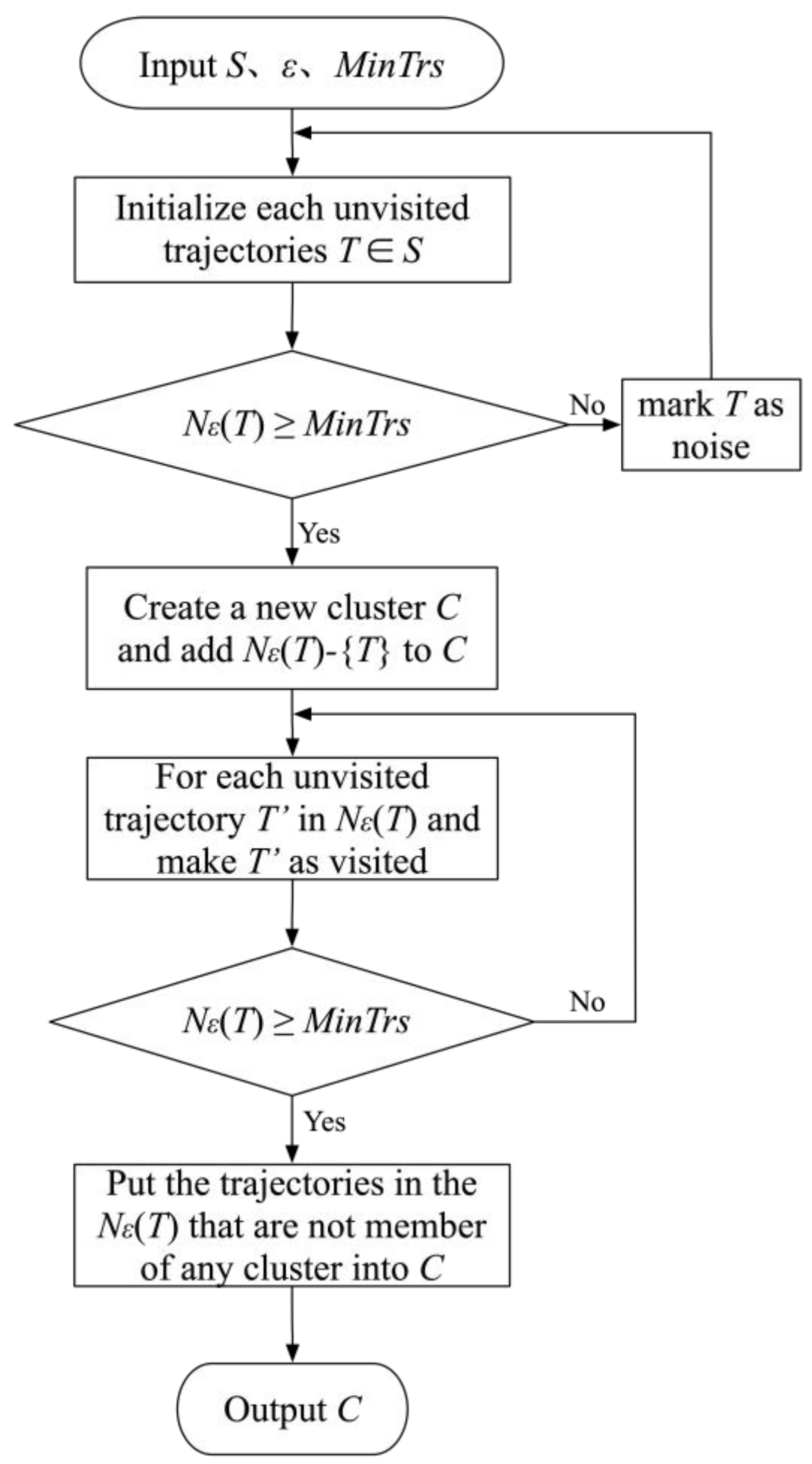
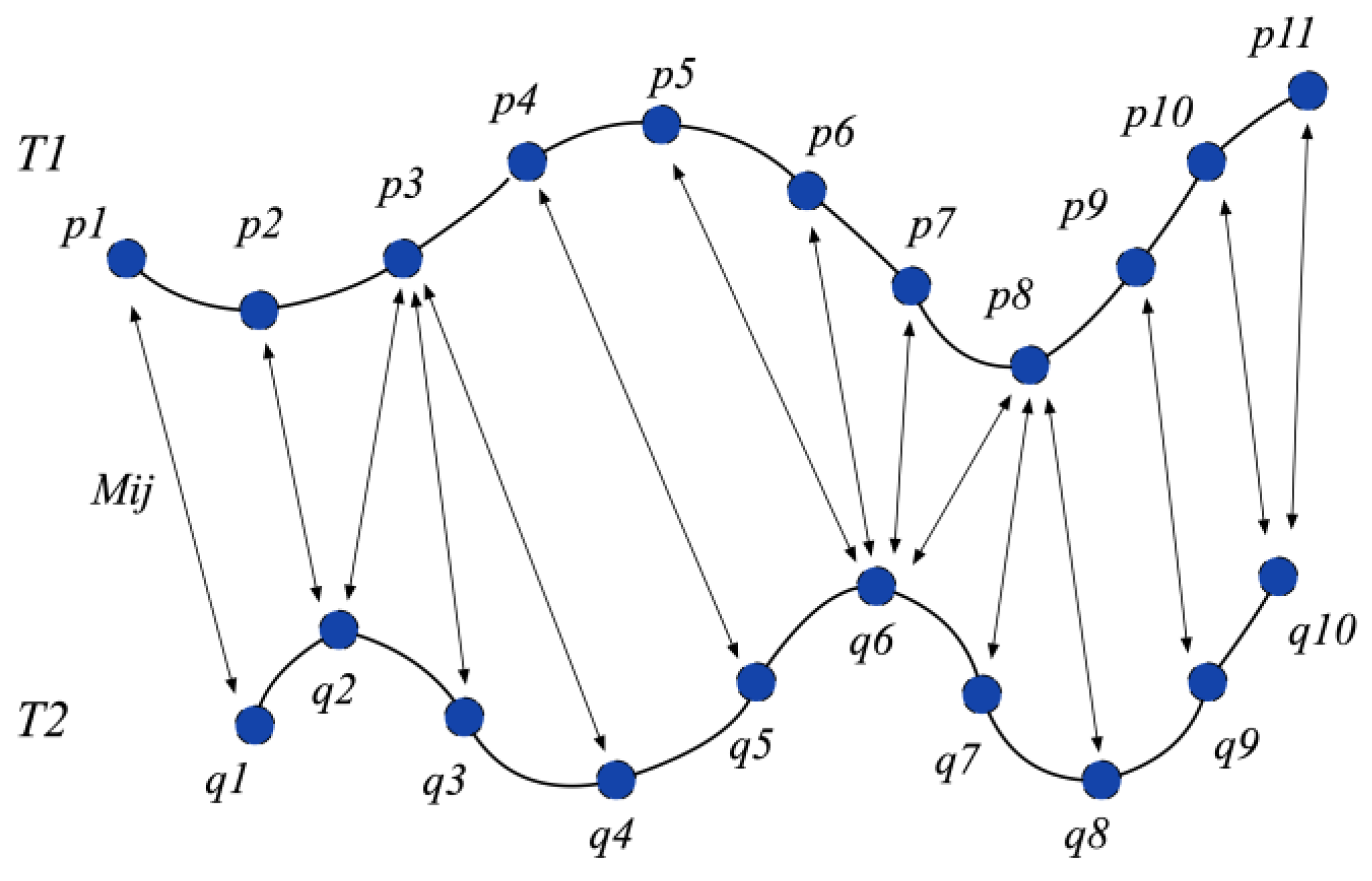

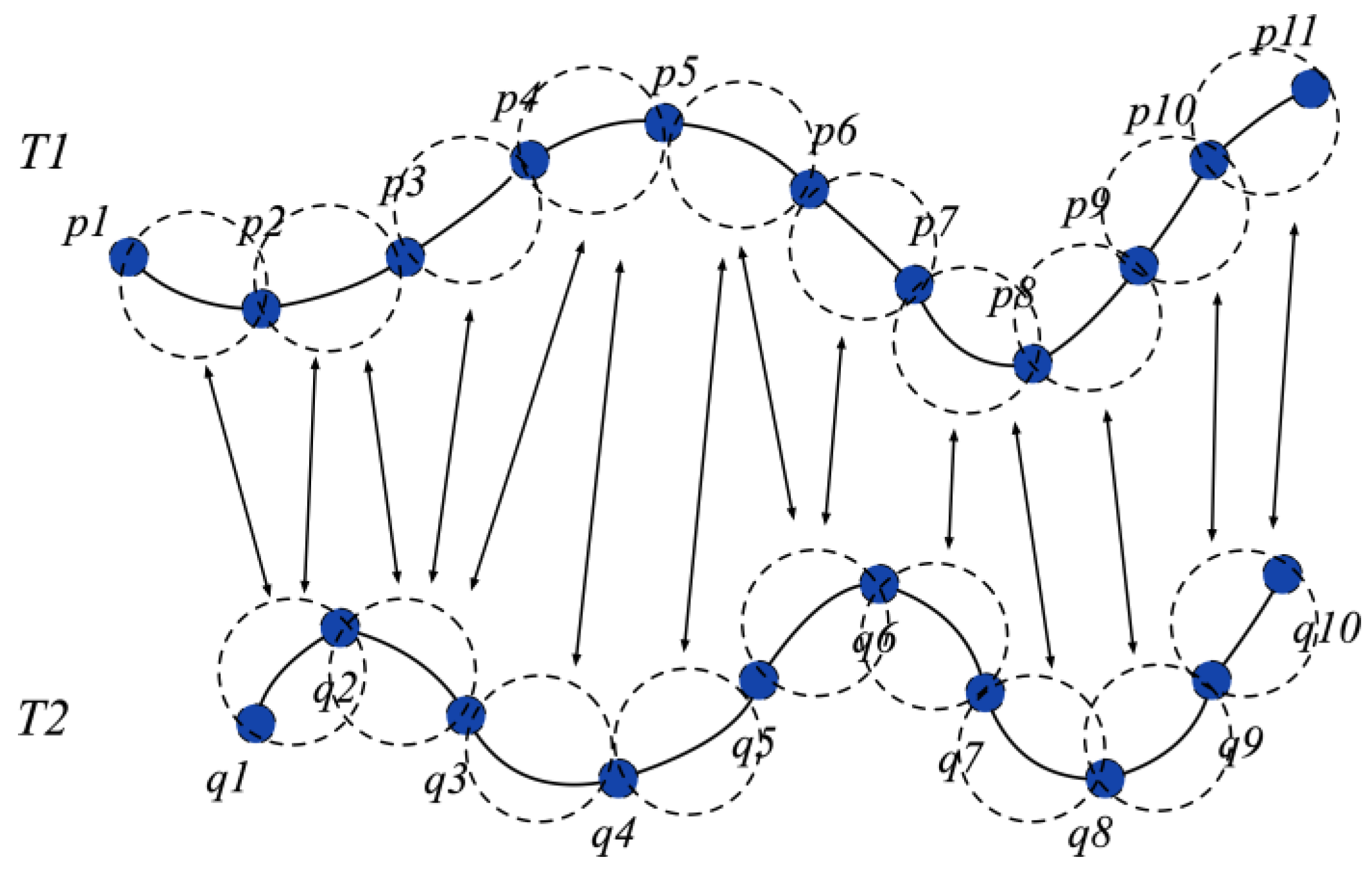
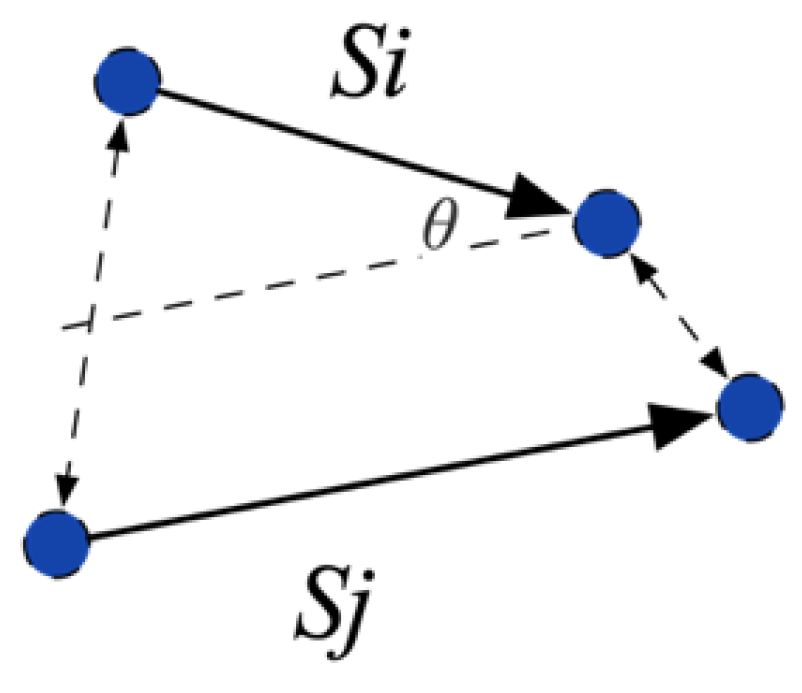

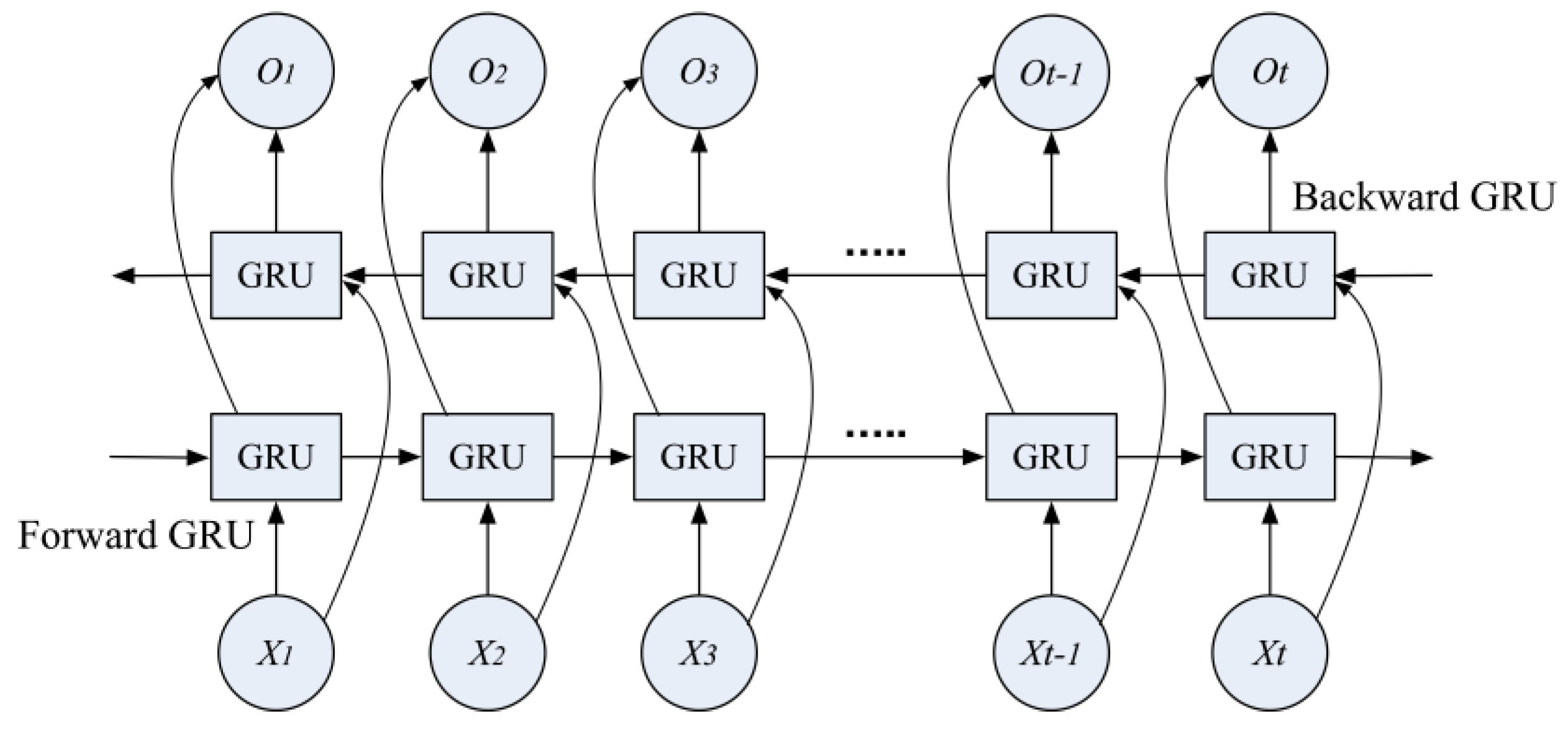
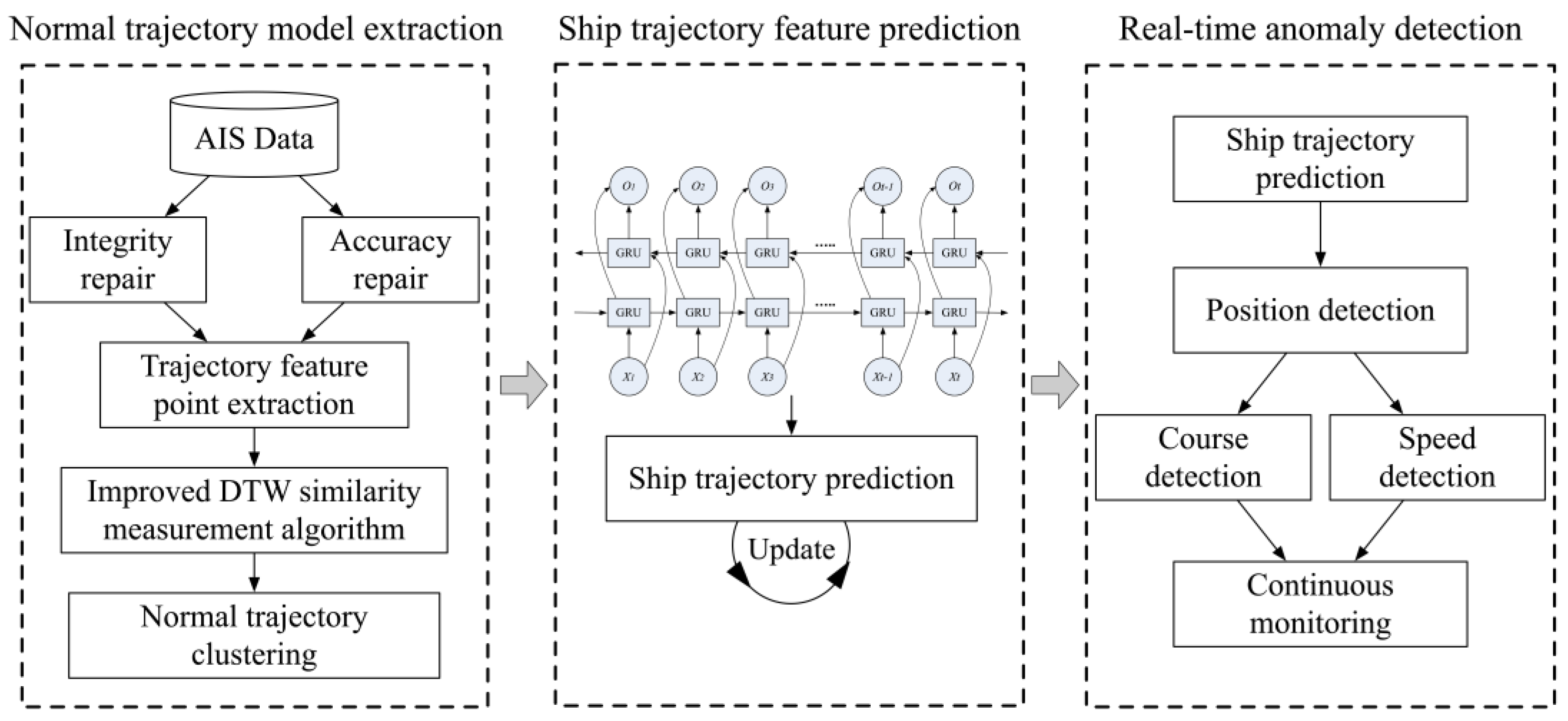
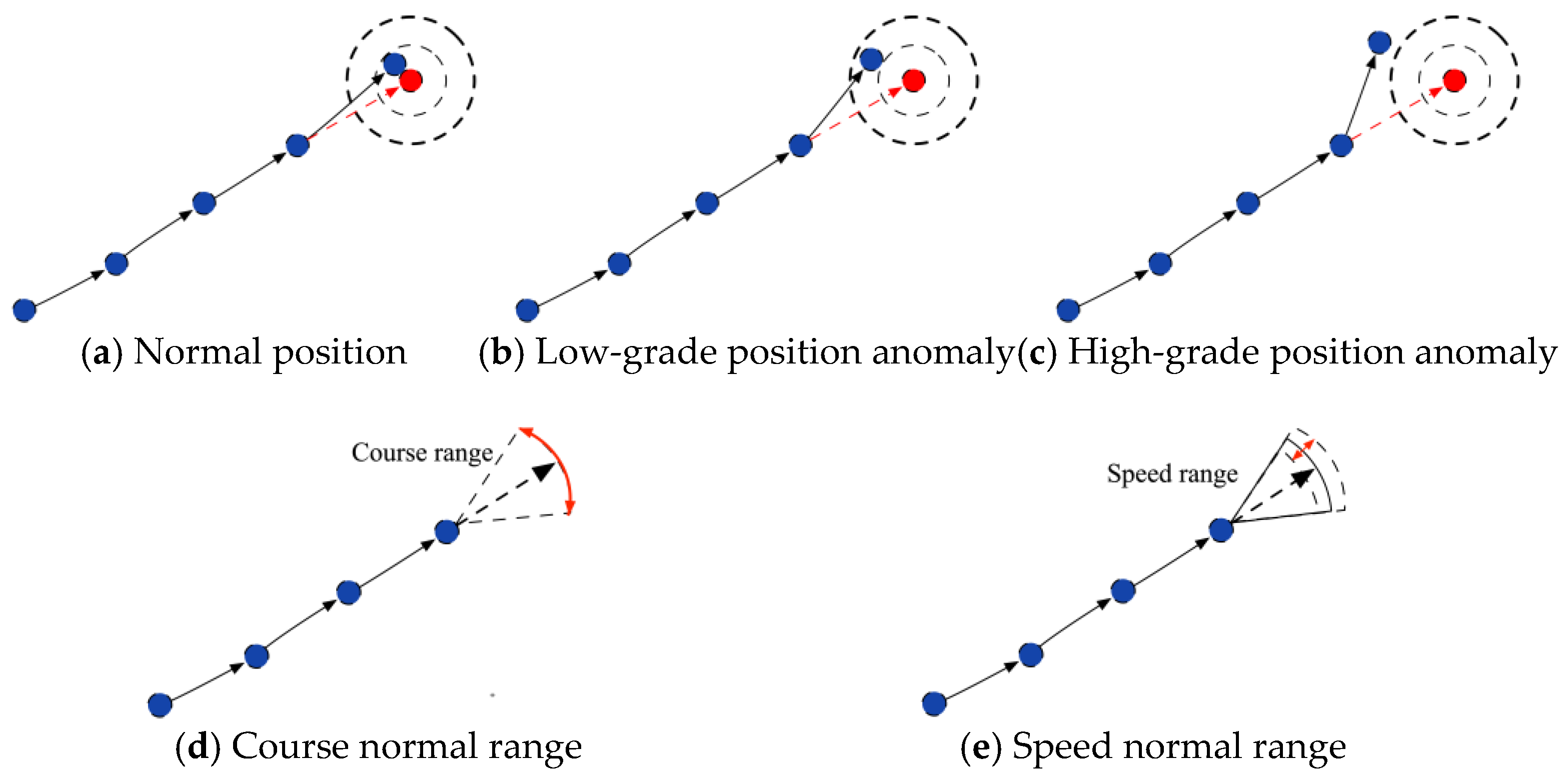
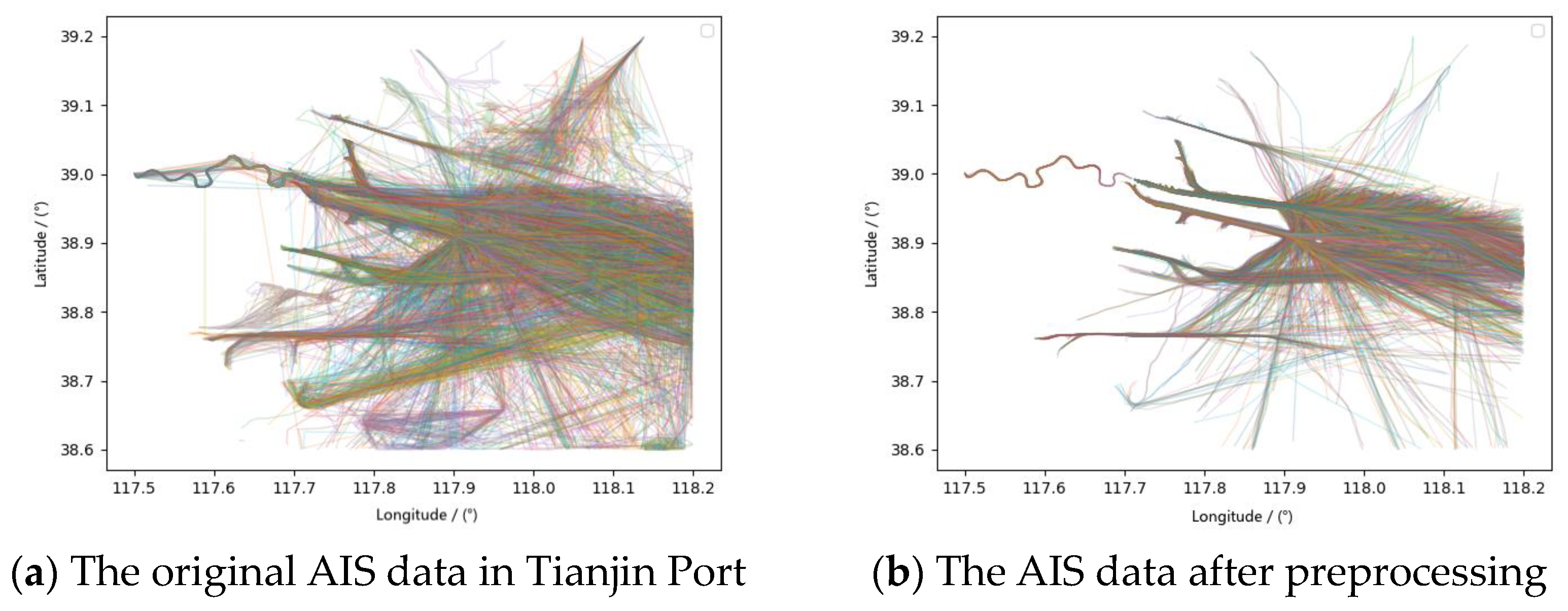
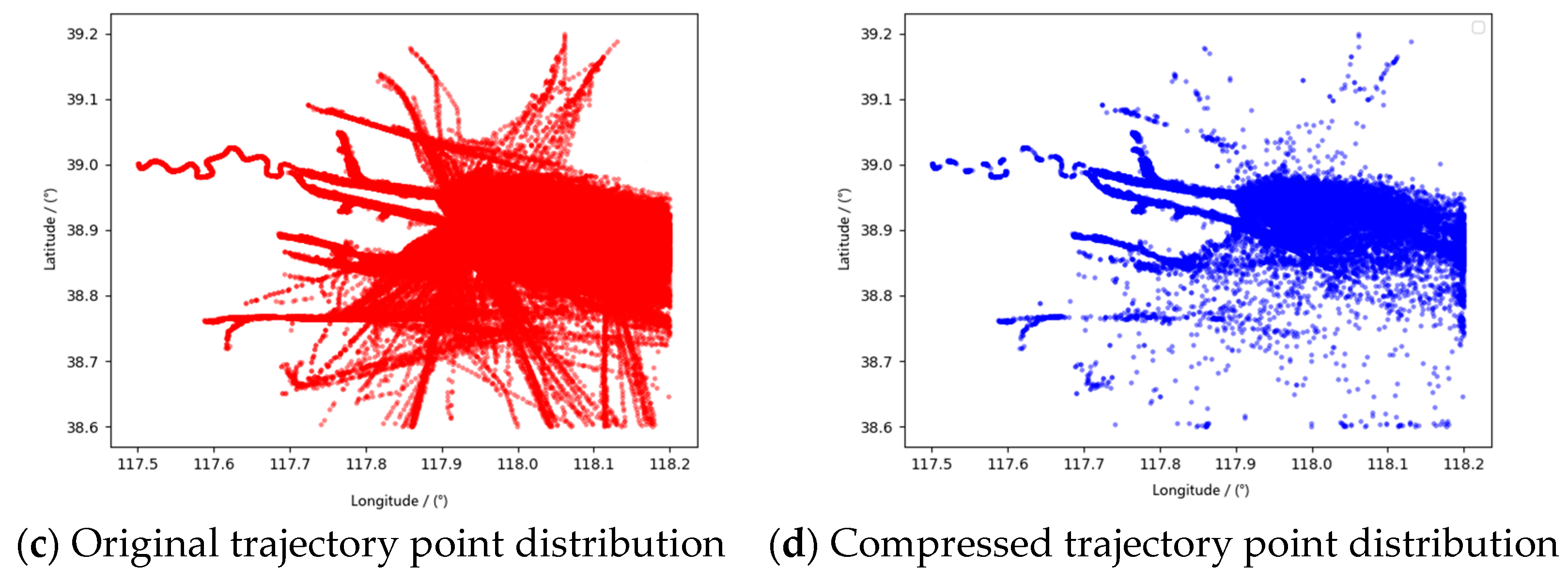



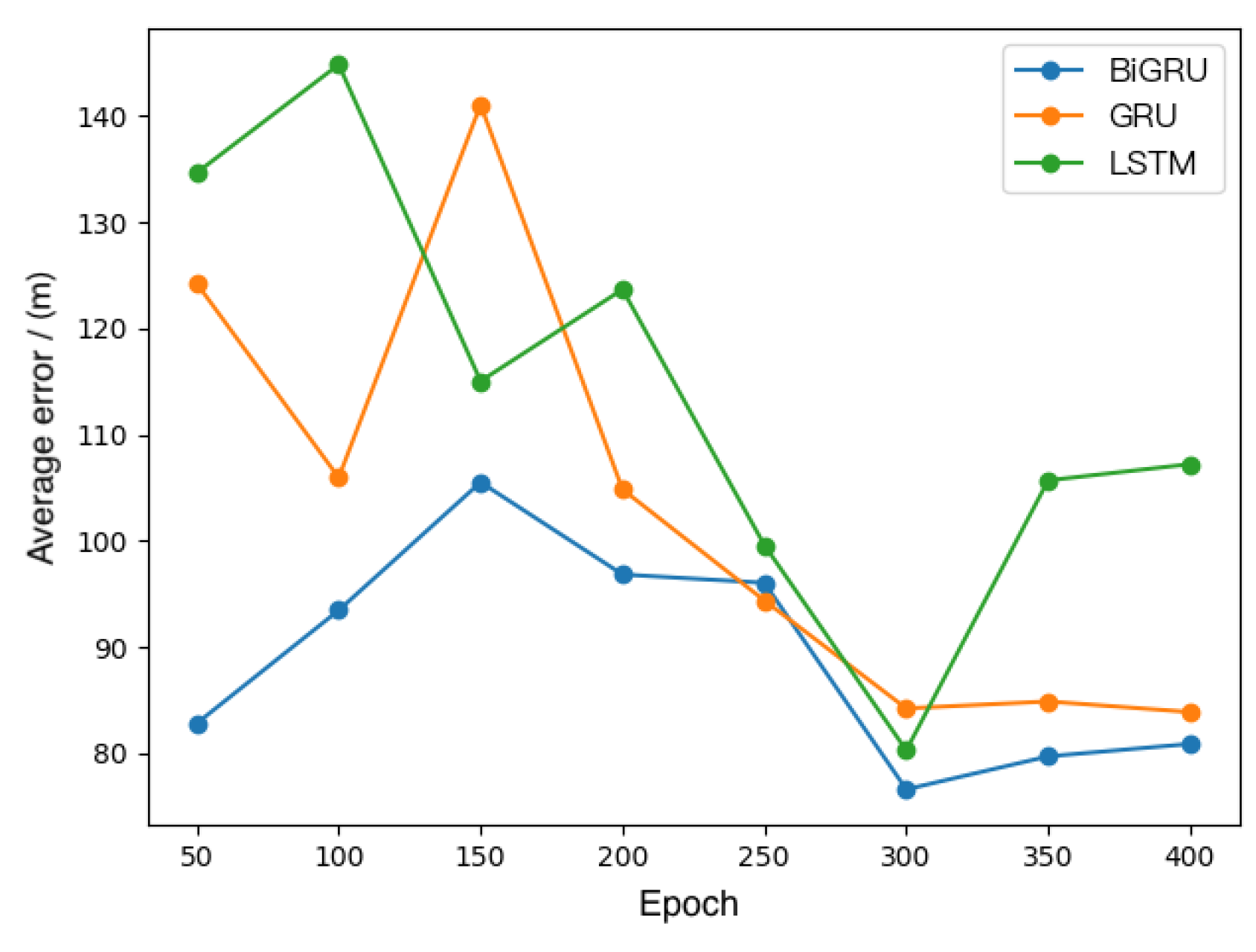

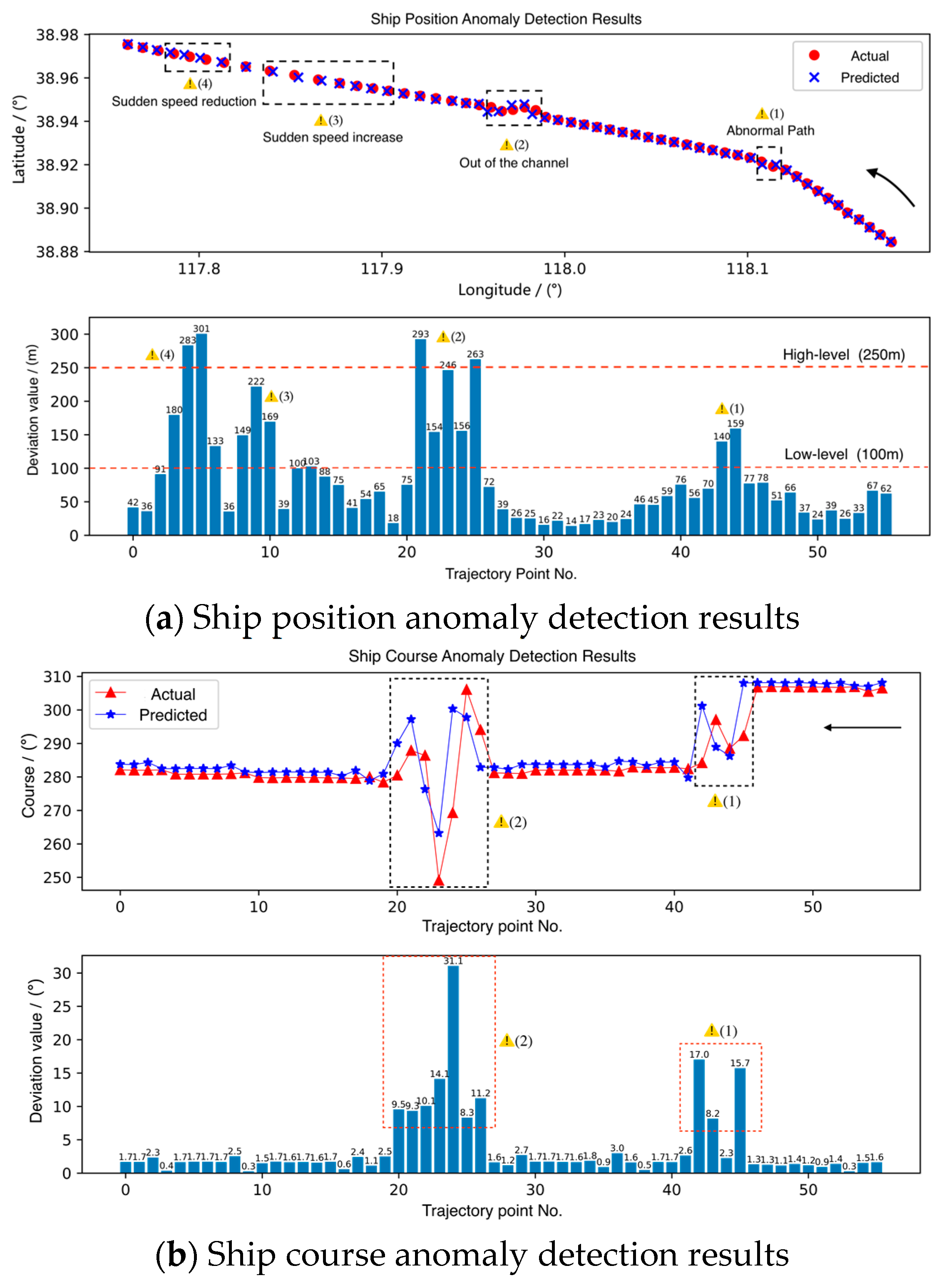
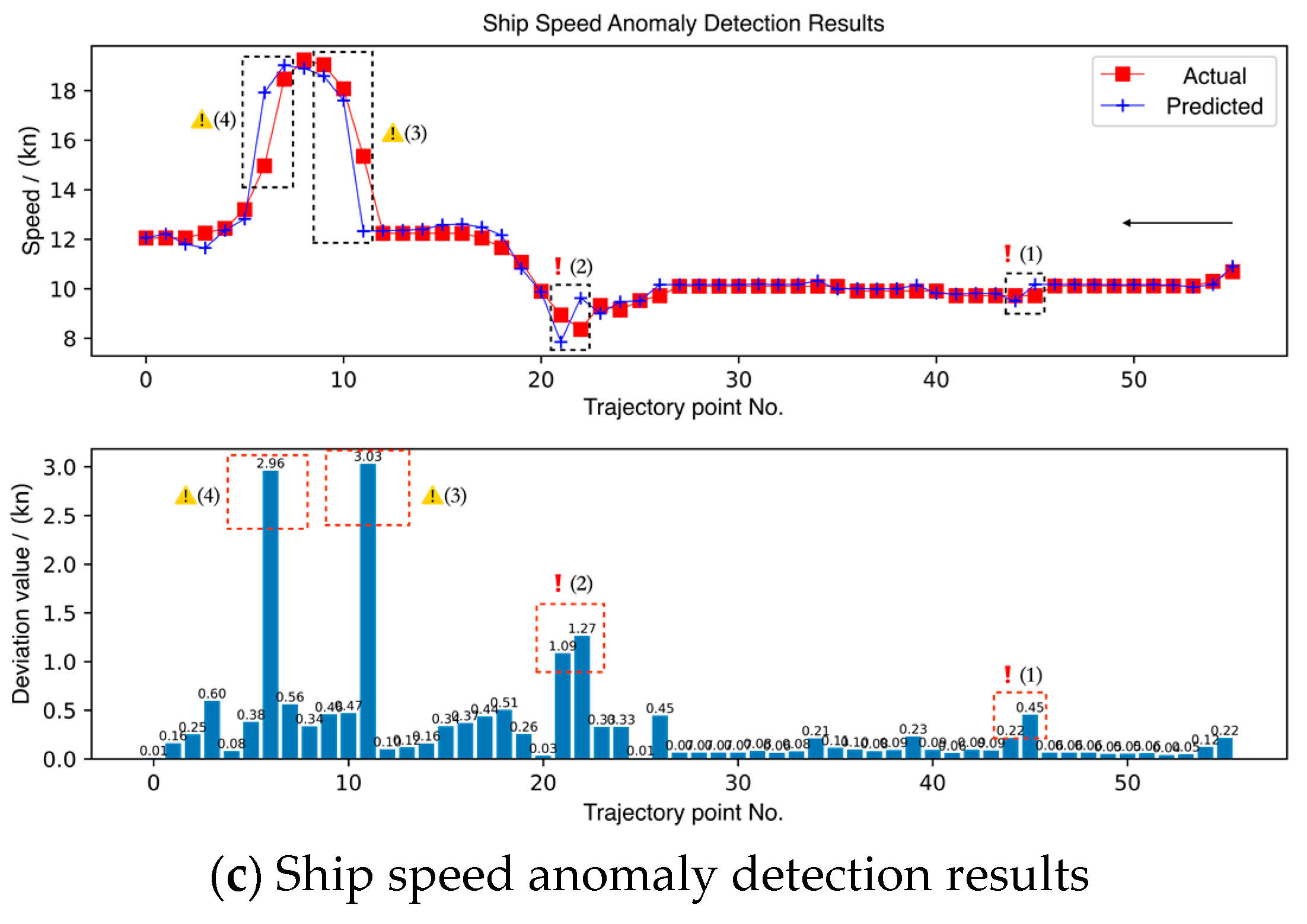
| Method | Publications | Use Attributes of Ship Behavior Data | Detection Model |
|---|---|---|---|
| Authors | |||
| Statistical Analysis | Holst [10] | Ship Location, Speed | Gaussian Distribution |
| Laxhammar et al. [3] | Ship Location, Speed | GMM | |
| Ristic et al. [11] | Ship Location | KDE | |
| Xiao [12] | Lateral Position, Speed, Course and Time Interval | Statistical Distribution | |
| Rong et al. [13] | Ship Location, Speed and Timestamp | Gaussian Process | |
| Machine Learning | Vespe [14] | Ship Location, Speed and Course | Unsupervised Learning |
| Mascaro [15] | Ship Location, Speed, Course and Spatio-temporal Contextual Information | Bayesian Network | |
| Lei [16] | Ship Location | MT-MAD | |
| Souza [17] | Ship Location, Speed and Operating Time | Hidden Markov Model, Data Mining and Multilayer filtering Strategy | |
| Toloue [13] | Ship Location, Speed and Course | Hidden Markov Model | |
| Prediction Based | Laxhammer [14] | Ship Location, Speed and Timestamp | Conformal Prediction |
| Bomberger [15] | Ship MMSI, Location, Speed and Course | Associative Neural Network | |
| Zhao [16] | Ship MMSI, Location, Speed, Course and Timestamp | LSTM | |
| Tang [17,18] | Ship MMSI, Location, Speed, Course and Timestamp | LSTM | |
| This Study | Ship MMSI, Location, Speed, Course and Timestamp | BiGRU |
| Number of Dynamic Information | Number of Static and Voyage-Related Information | Number of Ships | Number of Ships with Additional Information |
|---|---|---|---|
| 1,059,741 | 376,333 | 3884 | 2556 |
| Quality Issues | Number of Points Removed | Percentage |
|---|---|---|
| Information mismatch | 169,876 | 16.00% |
| Insufficient spatial integrity | 151,553 | 14.30% |
| Quality Issues | Number of Abnormal Track Points | Percentage |
|---|---|---|
| AIS data field error | 18,910 | 1.76% |
| Location error | 5452 | 0.51% |
| Speed error | 1736 | 0.16% |
| Processing Method | Number of Track Points after Compression | Compression Rate |
|---|---|---|
| Feature point extraction | 267,365 | 62.46% |
| Similarity Metric Method | Number of Class Clusters | Error Rate |
|---|---|---|
| Hausdorff | 4 | 0.1790 |
| DTW | 6 | 0.0870 |
| Improved DTW | 8 | 0.0058 |
| Environment | Detailed Information |
|---|---|
| CPU | Intel(R) Core(TM) i7-6700 CPU 3.41 GHz |
| Memory | 8.00 GB |
| System | Windows 10 operating system |
| Platform | TensorFlow 2.0 |
| Programming | Python |
| Characteristics | No. 1 Historical Trajectory | No. 2 Historical Trajectory | ||
|---|---|---|---|---|
| Maximum Error | Average Error | Maximum Error | Average Error | |
| Position (m) | 153.00 | 47.45 | 144.00 | 70.07 |
| Speed (kn) | 0.35 | 0.11 | 1.24 | 0.39 |
| Course (°) | 5.30 | 1.59 | 25.2 | 2.83 |
| Characteristics | No. 1 Historical Trajectory | No. 2 Historical Trajectory | ||
|---|---|---|---|---|
| Maximum Error | Average Error | Maximum Error | Average Error | |
| Position (m) | 258.00 | 70.13 | 146.00 | 83.21 |
| Speed (kn) | 0.35 | 0.10 | 1.18 | 0.41 |
| Course (°) | 5.10 | 1.58 | 26.50 | 3.42 |
| Track No. | Voyage Duration (min) | Trajectory Anomaly Type Description |
|---|---|---|
| No. 1 | 120 | Abnormal path, Abnormal steering and shifting |
| No. 2 | 46 | Abnormal steering repeatedly crossing the channel |
| No. 3 | 30 | Sudden stop in the channel |
| No. 4 | 90 | Abnormal steering, Sudden stop |
| Alert No. | Point No. | Time | Course (°) | Speed (kn) | Position Deviation (m) |
|---|---|---|---|---|---|
| Alert (1) | No.45 | 12:32 | 292.3 | 9.7 | 77 |
| Alert (1) | No.44 | 12:34 | 288.5 | 9.7 | 159 |
| Alert (1) | No.43 | 12:36 | 297.1 | 9.7 | 140 |
| Alert (1) | No.42 | 12:38 | 284.2 | 9.7 | 70 |
| Alert (2) | No.26 | 13:10 | 294.1 | 9.7 | 72 |
| Alert (2) | No.25 | 13:12 | 306.1 | 9.5 | 263 |
| Alert (2) | No.24 | 13:14 | 269.3 | 9.1 | 156 |
| Alert (2) | No.23 | 13:16 | 249.1 | 9.3 | 246 |
| Alert (2) | No.22 | 13:18 | 286.4 | 8.4 | 154 |
| Alert (2) | No.21 | 13:20 | 287.9 | 8.9 | 293 |
| Alert (3) | No.11 | 13:40 | 279.7 | 15.4 | 39 |
| Alert (3) | No.10 | 13:42 | 279.8 | 18.1 | 169 |
| Alert (3) | No.9 | 13:44 | 281.2 | 19.0 | 222 |
| Alert (4) | No.6 | 13:50 | 280.8 | 14.9 | 133 |
| Alert (4) | No.5 | 13:52 | 280.8 | 13.2 | 301 |
| Alert (4) | No.4 | 13:54 | 280.8 | 12.4 | 283 |
| Track No. | Time Consuming (ms) | AR | FR | Timeliness | |
|---|---|---|---|---|---|
| Abnormal Occurrences Times | Timely Identification Times | ||||
| No.1 | 36.2 | 93.75% | 6.66% | 4 | 4 |
| No.2 | 19.8 | 91.66% | 0.00% | 2 | 2 |
| No.3 | 12.6 | 100% | 0.00% | 1 | 1 |
| No.4 | 9.4 | 100% | 0.00% | 2 | 2 |
| Average | — | 96.35% | 1.67% | — | — |
| Track No. | Time Consuming (ms) | AR | FR | Timeliness | |
|---|---|---|---|---|---|
| Abnormal Occurrences Times | Timely Identification Times | ||||
| No.1 | 25.8 | 81.25% | 13.33% | 4 | 3 |
| No.2 | 12.3 | 91.66% | 12.50% | 2 | 2 |
| No.3 | 9.7 | 100% | 0.00% | 1 | 1 |
| No.4 | 5.2 | 100% | 0.00% | 2 | 2 |
| Average | — | 93.23% | 6.46% | — | — |
| Track No. | Time Consuming (ms) | AR | FR | Timeliness | |
|---|---|---|---|---|---|
| Abnormal Occurrences Times | Timely Identification Times | ||||
| No.1 | 29.1 | 87.50% | 15.55% | 4 | 3 |
| No.2 | 16.5 | 83.33% | 12.50% | 2 | 2 |
| No.3 | 10.9 | 100% | 11.11% | 1 | 1 |
| No.4 | 8.3 | 81.81% | 0.00% | 2 | 2 |
| Average | — | 88.15% | 9.79% | — | — |
Disclaimer/Publisher’s Note: The statements, opinions and data contained in all publications are solely those of the individual author(s) and contributor(s) and not of MDPI and/or the editor(s). MDPI and/or the editor(s) disclaim responsibility for any injury to people or property resulting from any ideas, methods, instructions or products referred to in the content. |
© 2023 by the authors. Licensee MDPI, Basel, Switzerland. This article is an open access article distributed under the terms and conditions of the Creative Commons Attribution (CC BY) license (https://creativecommons.org/licenses/by/4.0/).
Share and Cite
Zhang, B.; Hirayama, K.; Ren, H.; Wang, D.; Li, H. Ship Anomalous Behavior Detection Using Clustering and Deep Recurrent Neural Network. J. Mar. Sci. Eng. 2023, 11, 763. https://doi.org/10.3390/jmse11040763
Zhang B, Hirayama K, Ren H, Wang D, Li H. Ship Anomalous Behavior Detection Using Clustering and Deep Recurrent Neural Network. Journal of Marine Science and Engineering. 2023; 11(4):763. https://doi.org/10.3390/jmse11040763
Chicago/Turabian StyleZhang, Bohan, Katsutoshi Hirayama, Hongxiang Ren, Delong Wang, and Haijiang Li. 2023. "Ship Anomalous Behavior Detection Using Clustering and Deep Recurrent Neural Network" Journal of Marine Science and Engineering 11, no. 4: 763. https://doi.org/10.3390/jmse11040763
APA StyleZhang, B., Hirayama, K., Ren, H., Wang, D., & Li, H. (2023). Ship Anomalous Behavior Detection Using Clustering and Deep Recurrent Neural Network. Journal of Marine Science and Engineering, 11(4), 763. https://doi.org/10.3390/jmse11040763







